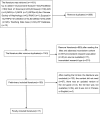Evidence Summary of Personalized Management of Peritoneal Dialysis Volume in Adults
- PMID: 40391302
- PMCID: PMC12087587
- DOI: 10.2147/JMDH.S516563
Evidence Summary of Personalized Management of Peritoneal Dialysis Volume in Adults
Abstract
Purpose: The overload capacity poses great challenges to the management and prognosis of peritoneal dialysis patients. There have been many studies, but they are relatively fragmented and inconsistent. It is urgent to summarize high-quality evidence. The objective of this study is to thoroughly investigate, extract, assess, and synthesize the most relevant evidence about the individualized management of peritoneal volume in patients undergoing peritoneal dialysis. It can be utilized in clinical practice to improve patient outcomes.
Methods: The study used the "6S" pyramid model to identify all available evidence related to the personalized management of peritoneal volume among patients receiving peritoneal dialysis. This comprehensive search encompassed various types of evidence, including guidelines, recommended practices, systematic reviews, evidence summaries, expert consensus documents, and original research studies. These were sourced from both domestic and international guideline websites, professional association platforms, as well as relevant databases. The time limit was set from the date of database creation until April 2024, with the search commencing in December 2023.
Results: The systematic search yielded 17 pieces of literature that were ultimately included in the analysis. This collection comprised seven guidelines, four best practices, two documents reflecting expert consensus, two systematic reviews, and two randomized controlled trials. The overall quality of the literature analyzed was found to be high. Through this thorough review, a total of 37 pieces of the best evidence were identified and categorized into three critical aspects: risk factors, comprehensive assessment methodologies, and various intervention strategies.
Conclusion: This study serves as a consolidation of the available evidence regarding the personalized management of peritoneal volume for patients undergoing peritoneal dialysis. It underscores the importance of clinical staff's ability to implement tailored volume management programs that address the unique circumstances of each patient.
Keywords: evidence summary; evidence-based nursing; individualized management; peritoneal volume.
© 2025 Yu et al.
Conflict of interest statement
The authors declare no potential conflicts of interest concerning this article’s research, authorship, or publication.
Figures
Similar articles
-
The future of Cochrane Neonatal.Early Hum Dev. 2020 Nov;150:105191. doi: 10.1016/j.earlhumdev.2020.105191. Epub 2020 Sep 12. Early Hum Dev. 2020. PMID: 33036834
-
Nursing management of cognitive dysfunction in adults with brain injury: Summary of best evidence-practiced strategies.J Clin Nurs. 2024 Jul;33(7):2496-2508. doi: 10.1111/jocn.17058. Epub 2024 Feb 17. J Clin Nurs. 2024. PMID: 38366758 Review.
-
Summary of the best evidence for the management of dysphagia in elderly patients.Eur Arch Otorhinolaryngol. 2024 Aug;281(8):3893-3901. doi: 10.1007/s00405-024-08530-2. Epub 2024 Mar 9. Eur Arch Otorhinolaryngol. 2024. PMID: 38459985 Review.
-
Best Evidence Summary for Management of Older People With Type 2 Diabetes Mellitus Using 'Internet Plus Nursing Services'.Int J Older People Nurs. 2024 Nov;19(6):e12657. doi: 10.1111/opn.12657. Int J Older People Nurs. 2024. PMID: 39429159 Review.
-
The Effectiveness of Integrated Care Pathways for Adults and Children in Health Care Settings: A Systematic Review.JBI Libr Syst Rev. 2009;7(3):80-129. doi: 10.11124/01938924-200907030-00001. JBI Libr Syst Rev. 2009. PMID: 27820426
References
-
- Pippias M, Alfano G, Kelly DM, et al. Capacity for the management of kidney failure in the International Society of Nephrology Western Europe region: report from the 2023 ISN Global Kidney Health Atlas (ISN-GKHA). Kidney Int Suppl. 2024;13(1):136–151. doi:10.1016/j.kisu.2024.01.008 - DOI - PMC - PubMed
Publication types
LinkOut - more resources
Full Text Sources
Miscellaneous



